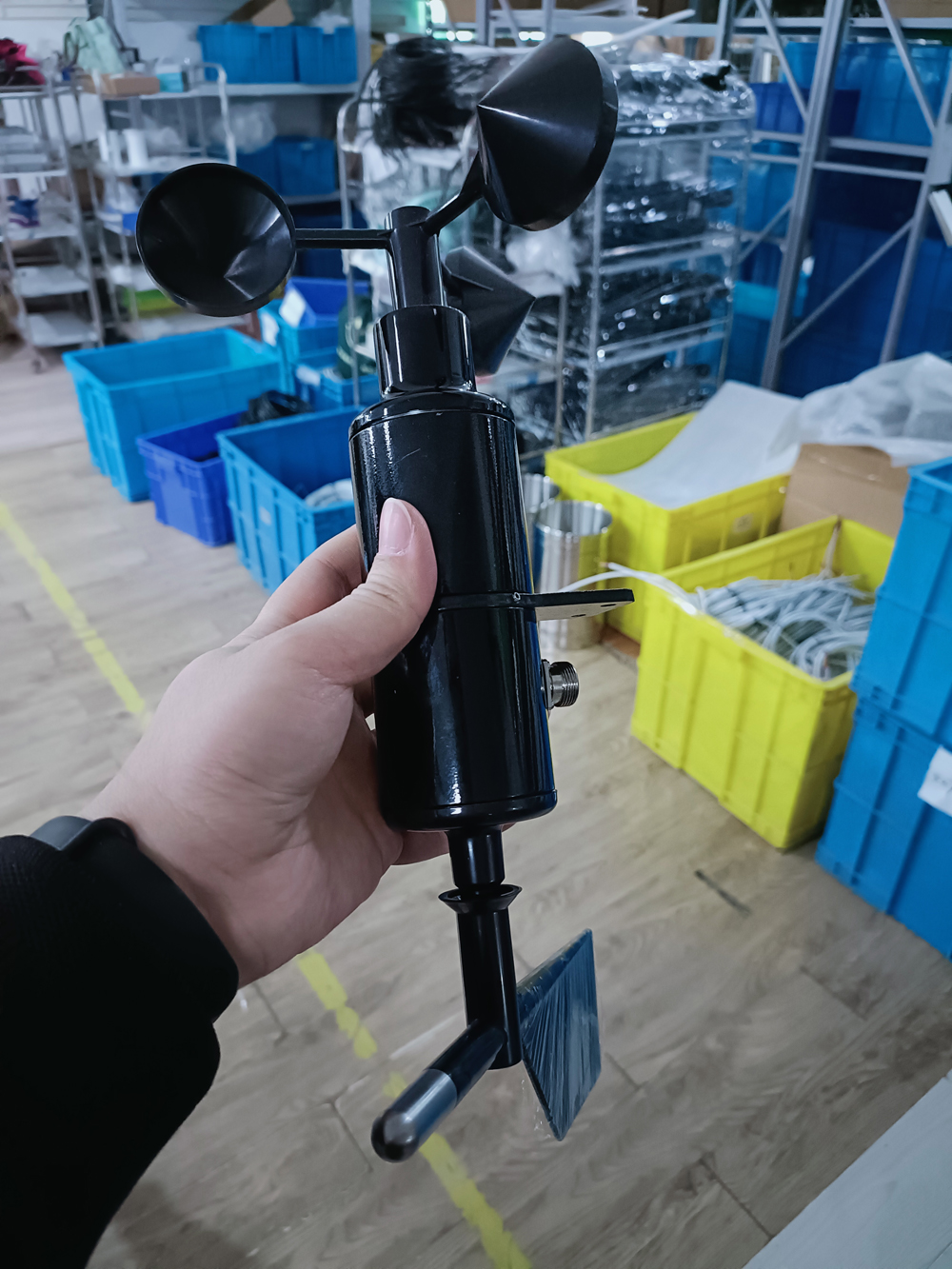

— About Us —
—Products—
 Consumer hotline +8618073152920
Consumer hotline +8618073152920 WhatsApp:+8615367865107
Address:Room 102, District D, Houhu Industrial Park, Yuelu District, Changsha City, Hunan Province, China
Factory scene
Time:2024-02-16 17:53:00 Popularity:971
An integrated wind speed and direction sensor, also known as a wind vane or anemometer, is a device that measures both the speed and direction of the wind. It is commonly used in meteorology, aviation, weather stations, and various other applications where wind data is important.
Here is how an integrated wind speed and direction sensor typically works:
1. Wind Speed Measurement: The sensor includes cups or propellers that rotate when exposed to the wind. The rotation speed of these cups or propellers is directly proportional to the wind speed. The sensor measures the rotation speed and converts it into a corresponding wind speed reading, usually in units of meters per second (m/s) or miles per hour (mph).
2. Wind Direction Measurement: The sensor also incorporates a wind vane, which consists of a freely rotating pointer that aligns itself with the direction of the wind. The wind direction is determined by the orientation of the pointer. The sensor measures the position of the pointer and converts it into a corresponding wind direction reading, usually in degrees.
3. Integration: Both the wind speed and direction measurements are integrated within a single sensor housing, making it compact and convenient for installation.
4. Output: The integrated sensor provides electrical signal outputs, such as voltage or current, that correspond to the wind speed and direction readings. These outputs can be connected to data loggers, weather stations, or other monitoring devices for recording and analysis.

Integrated wind speed and direction sensors offer several advantages:
1. Convenience: Having both wind speed and direction measurements in a single sensor simplifies installation and reduces the number of devices required.
2. Accuracy: Integrated sensors are designed to provide accurate and reliable wind data, allowing for precise monitoring and analysis.
3. Durability: These sensors are typically built to withstand harsh weather conditions, ensuring their longevity and reliability in outdoor environments.
4. Real-time Monitoring: Integrated sensors can provide real-time wind data, enabling continuous monitoring and timely response to changing wind conditions.
5. Compatibility: These sensors are compatible with various applications, including weather forecasting, wind energy assessment, environmental monitoring, and outdoor sports.

Overall, an integrated wind speed and direction sensor is a valuable tool for measuring and monitoring wind conditions in various industries and applications. It provides comprehensive wind data that is essential for decision-making, safety, and optimizing operations.
Related recommendations
Sensors & Weather Stations Catalog
Agriculture Sensors and Weather Stations Catalog-NiuBoL.pdf
Weather Stations Catalog-NiuBoL.pdf
Related products
 Combined air temperature and relative humidity sensor
Combined air temperature and relative humidity sensor Soil Moisture Temperature sensor for irrigation
Soil Moisture Temperature sensor for irrigation Soil pH sensor RS485 soil Testing instrument soil ph meter for agriculture
Soil pH sensor RS485 soil Testing instrument soil ph meter for agriculture Wind Speed sensor Output Modbus/RS485/Analog/0-5V/4-20mA
Wind Speed sensor Output Modbus/RS485/Analog/0-5V/4-20mA Tipping bucket rain gauge for weather monitoring auto rainfall sensor RS485/Outdoor/stainless steel
Tipping bucket rain gauge for weather monitoring auto rainfall sensor RS485/Outdoor/stainless steel Pyranometer Solar Radiation Sensor 4-20mA/RS485
Pyranometer Solar Radiation Sensor 4-20mA/RS485
Screenshot, WhatsApp to identify the QR code
WhatsApp number:+8615367865107
(Click on WhatsApp to copy and add friends)
